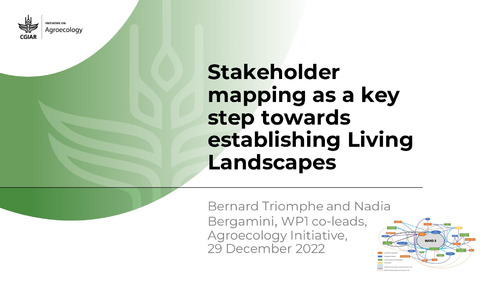Stakeholder mapping as a key step towards establishing Agroecological Living Landscapes
Understanding who the stakeholders are in each territory, and who should be part of an Agroecological Living Landscape (ALL), as well as what type of relationships might already exist between stakeholders (i.e., ongoing multistakeholder platforms), what their interests are, and what agroecological practices they are already engaged in is a key initial step in forming ALLs. The information derived from of the stakeholder mappings will shape the structure and the type of agroecological transitions that ALL stakeholders will pursue in each territory. This presentation includes the following aspects: Briefly present the main features of the guidelines developed by WP1 about stakeholder mapping and assessment of existing multistakholder initiatives; Propose a brief cross-analysis of results that country teams obtained from implementing in their own specific ways stakeholder mapping and initiative assessment, and a number of lessons derived from this activity at the country and WP1 levels ; Outline the next steps; Illustrate how country teams implemented stakeholder mapping and the kind of results obtained by end of 2022, with a particular focus on Peru, Zimbabwe and Tunisia.

